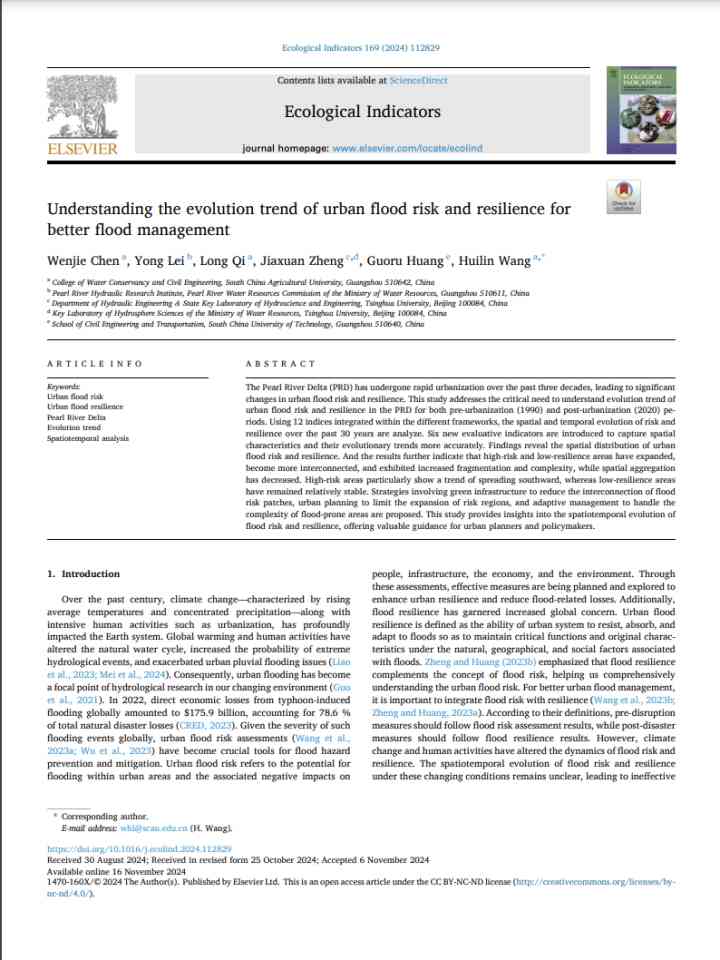Understanding the evolution trend of urban flood risk and resilience for better flood management
This study addresses the critical need to understand evolution trend of urban flood risk and resilience in the Pearl River Delta (PRD) of China for both pre-urbanization (1990) and post-urbanization (2020) periods. Strategies involving green infrastructure to reduce the interconnection of flood risk patches, urban planning to limit the expansion of risk regions, and adaptive management to handle the complexity of flood-prone areas are proposed. This study provides insights into the spatiotemporal evolution of flood risk and resilience, offering valuable guidance for urban planners and policymakers.
Findings reveal the spatial distribution of urban flood risk and resilience, and the results further indicate that high-risk and low-resilience areas have expanded, become more interconnected, and exhibited increased fragmentation and complexity, while spatial aggregation has decreased. High-risk areas particularly show a trend of spreading southward, whereas low-resilience areas have remained relatively stable. Strategies involving green infrastructure to reduce the interconnection of flood risk patches, urban planning to limit the expansion of risk regions, and adaptive management to handle the complexity of flood-prone areas are proposed.
Explore further
